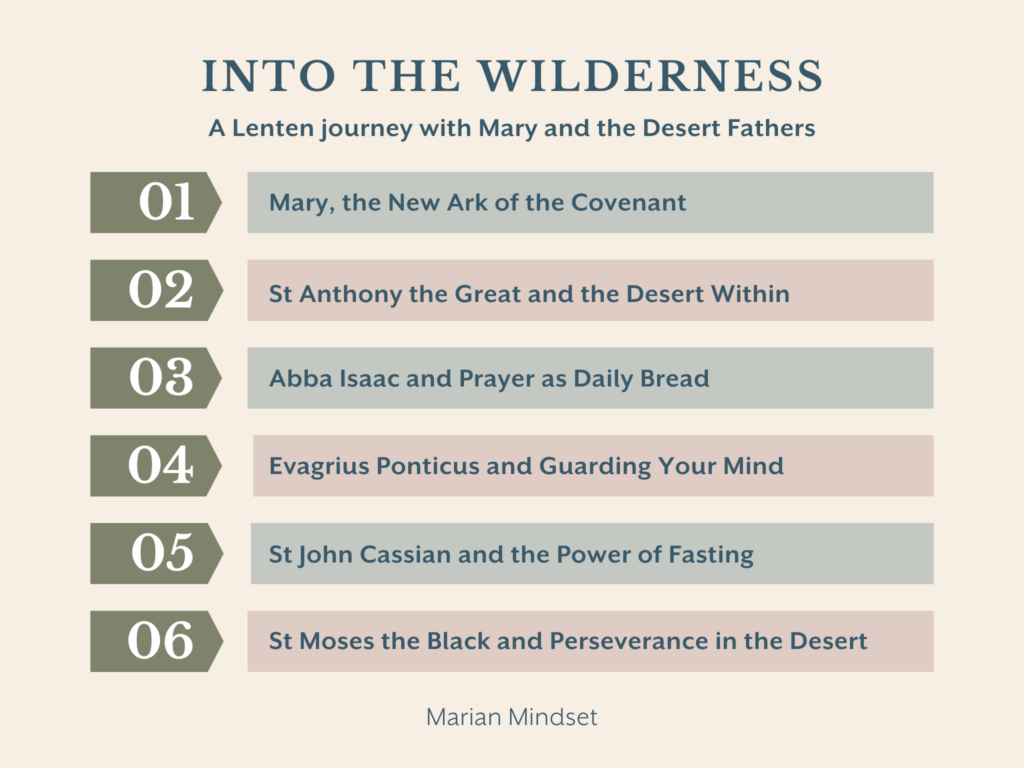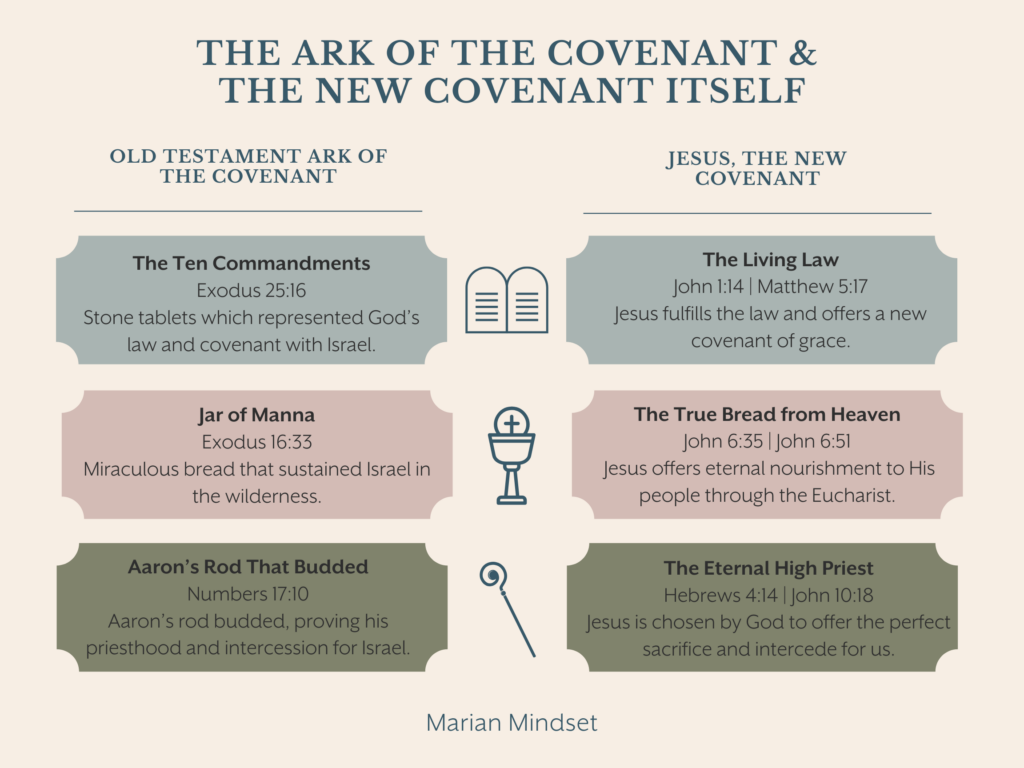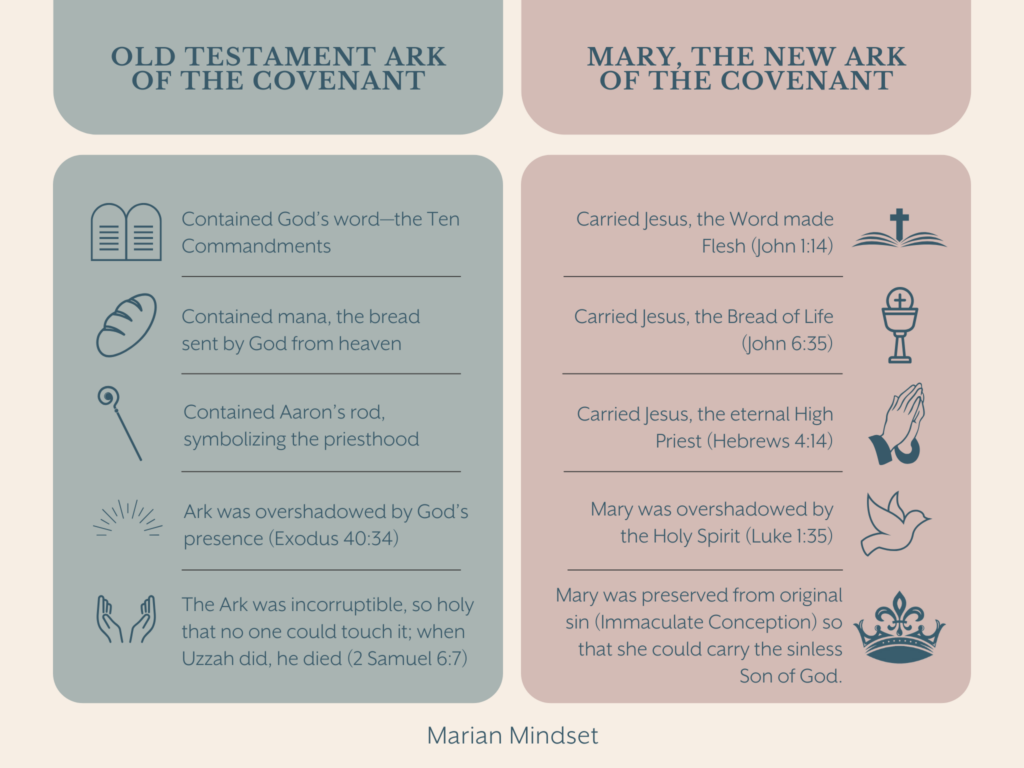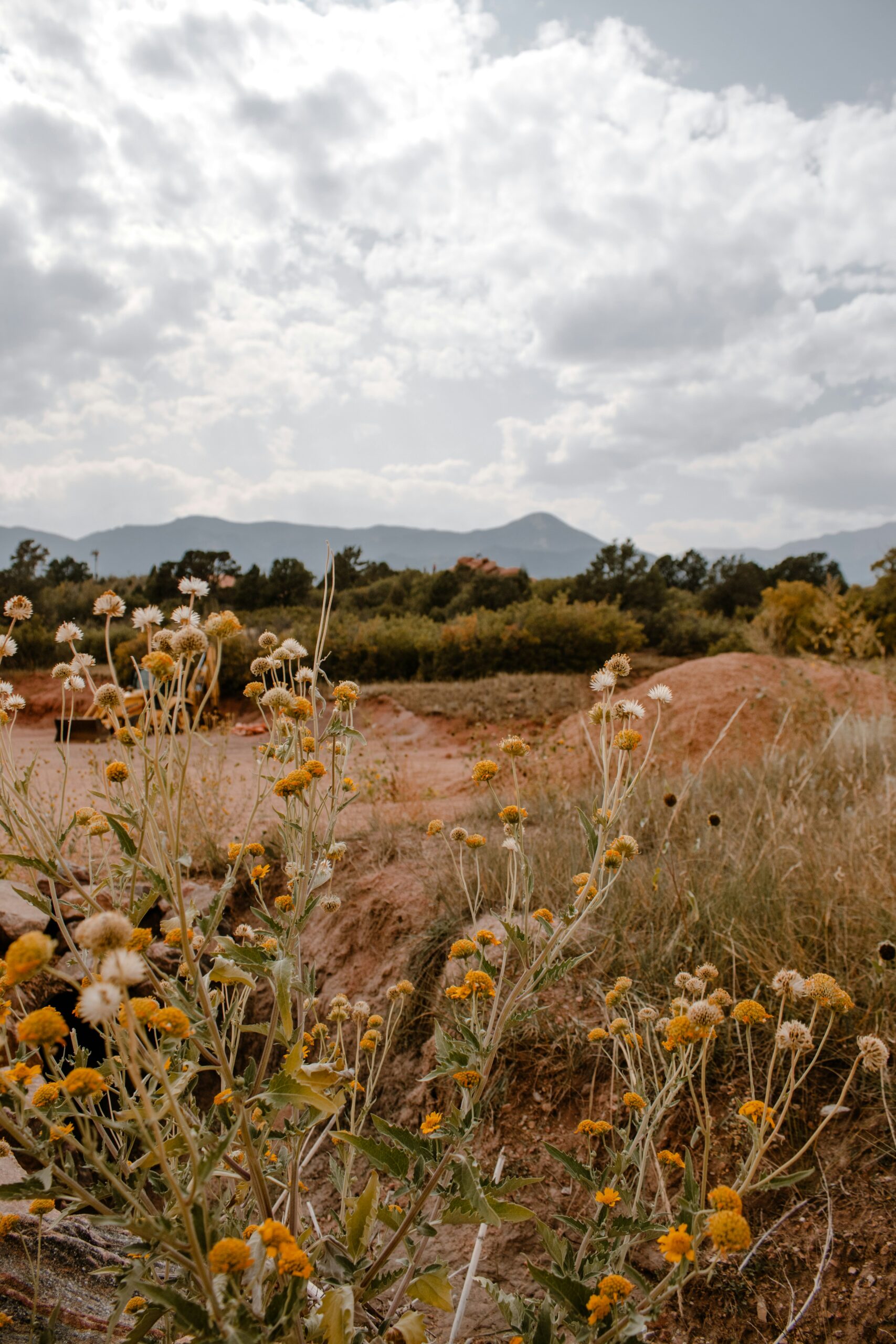Holy Spirit…You Okay?
Not gonna lie to you, when the idea for this series, Into the Wilderness: A Lenten Pilgrimage with the Desert Fathers, came, I was skeptical. First, because the Desert Fathers aren’t exactly the people I’d turn to for advice on dealing with most modern issues. They weren’t balancing grocery lists, work emails, and different school let-out times. And their isolated and extreme lifestyles don’t exactly make them obvious mentors for women living in the 21st century. Also, the whole surviving off bugs and dressing in camel fur John-the-Baptist-style isn’t winning them any relatability points.
And then, the more I thought about it, the more I wondered, “Holy Spirit, are You okay? Whose idea was this?” Those men lived alone, in silence, alone, with no one demanding dino nuggets, in silence, without constantly being touched, alone, and oh, did I mention, in silence? What could they teach me, a woman who is so close to her kids all day, they could be mistaken for extra appendages? The only silence in my life is when I’m sneaking out of the baby’s room. Espionage agents got nothing on a mom trying to float herself out of a sleeping baby’s room, lest she have to spend another 45 minutes rocking and bouncing like a human metronome set to the rhythm of sheer desperation while the baby stares so wide awake their eyelids have disappeared into their skull. Deep breath.
And it’s not just moms. Every spiritual mother I know is carrying a full-to-bursting plate—work deadlines, family needs multiplying by the hour, and church obligations that tug at the heart but drain the clock. They’re volunteering, making cupcakes for the women’s group, and checking in on aging parents between errands before slipping into bed bone-tired, whispering half a Hail Mary before their eyelids close.
The quiet, aesthetic life of the Desert Fathers could not be further from the chaotic, coffee-fueled, never-sit-down rhythm of modern motherhood (biological, adoptive, step, spiritual, or otherwise). Their days were marked by long stretches of silence; ours are filled with ringing phones, endless emails, and the constant call of “Mom! Mom! Mom!” They sought solitude in the wilderness; we can’t even go to the bathroom without an audience. They lived in caves; we navigate a world of car seats, spreadsheets, and 10 pm Amazon Prime orders because someone lost their only pair of decent church shoes. And yet—somehow—their wisdom is exactly what we need. So, this Lenten season, we’re stepping into the desert, into a spiritual wilderness, not to escape the noise, but to learn how to encounter God within it.
The desert as a place of preparation and encounter
Lent is, and has been, a time of preparation for Easter with roots tracing back to the 40-day fasts observed by early Christians, modeled after Jesus’ 40 days in the desert (Matthew 4:1-11). Throughout Scripture, the desert is both a place of testing and of deep encounter with God—a space where distractions are stripped away, dependence on Him is refined, and hearts are made ready for what is to come. The desert, a barren wilderness in reality, when applied to the interior life, invites silence, purification, and preparation.
The desert is where God leads His people to prepare them for something greater. It’s where the Israelites learned to trust in His provision, where Jesus fasted and prayed before His public ministry, and where the Desert Fathers sought solitude to battle sin and grow in holiness. Over the next several weeks, we will journey together, drawing wisdom from the Desert Fathers and looking to Mary as our guide. Each week, we will focus on a different lesson from the desert, learning how to cultivate trust, prayer, perseverance, and surrender in our own lives. Here’s a look at the path ahead as we step into this season of transformation.

But the desert isn’t just a place of barrenness; it’s a place of encounter. And no one embraced the deserts of life with more grace than Mary. From the uncertainty of the Annunciation to the physical wilderness of Egypt, from the hidden years in Nazareth to the ultimate desert of Calvary, Mary walked the path of silence, trust, and surrender. This Lent, we will journey into the spiritual desert, drawing wisdom from the Desert Fathers and the life of Mary to deepen our faith and strengthen our call to spiritual and physical motherhood. As we strip away distractions and comforts, we prepare our hearts—just as she did—to walk with Christ to the Cross and into the joy of His Resurrection.
Mary: The New Ark and our guide through the wilderness
Though she lived hundreds of years before the first of the desert ascetics, no one embraced the spiritual wilderness more fully—or more quietly—than Mary. The Bible does not mention Mary spending time in the literal deserts of Egypt, Palestine, and Syria, like the Israelites and hermits of old, but Mary walked through a harrowing wilderness of trust, surrender, suffering, and silences, again and again. From the Annunciation to the blood-spackled ground beneath the Cross, she stepped into the unknown with unwavering faith, a lifelong example teaching us how to journey through our own deserts with grace. This Lent, as we walk with the Desert Fathers, let’s start with the Mother of God—our model in the wilderness.
To explore Mary in the wilderness, we begin in Exodus, where Moses leads the Israelites out of 400 years of slavery and to Mount Sinai. There, he ascends into a storm of divine presence—thunder cracks, fire descends, and the mountain trembles. God gives him the Ten Commandments, the foundation of His covenant, and keeps him on the mountain for forty days, receiving instructions for worship and a sacred dwelling place.

But below, impatience festers. Despite witnessing plagues, a pillar of fire, the parting sea, and Pharaoh’s army swallowed whole, the Israelites quickly forget. They melt their gold, fashion an idol, and call it god. When Moses descends and sees their idolatry, his fury burns. He shatters the stone tablets—a visible sign of the broken covenant—then grinds the calf into powder, mixes it into water, and makes them drink it. To us, it seems bizarre, but in ancient Israel, it mirrored Numbers 5, where an adulterous woman drank bitter water as a divine test. The Israelites’ idolatry was spiritual unfaithfulness, and their punishment was a sobering acknowledgment of their guilt.
Moses returns to receive the covenant again, but this time, God commands something even greater—the Tabernacle, a portable sanctuary where heaven and earth would meet. At its center, in the Holy of Holies, would rest the Ark of the Covenant, the holiest object in Israel’s history.
More than a chest, the Ark was a throne, crafted from acacia wood, overlaid with gold, containing the stone tablets, later joined by a jar of manna (Exodus 16:33) and Aaron’s staff (Numbers 17:10)—signs of God’s law, provision, and authority. And covering it was the Mercy Seat, flanked by two cherubim with wings outstretched, where God’s glory descended. The Ark led Israel in battle, parted rivers, toppled walls, and symbolized God’s untouchable holiness—so sacred that Uzzah was struck dead for touching it (2 Samuel 6:6-7), and the Philistines were plagued for capturing it (1 Samuel 5).
Centuries later, the Ark of the Covenant mysteriously disappeared—either hidden, destroyed, or taken—and left behind a longing for something greater, for a new and everlasting dwelling place of God’s presence. And in the fullness of time, that longing would be fulfilled not in a golden chest but in a woman.

Just as the Ark was carried through the wilderness, preparing God’s people for the Promised Land, Mary journeys with us through Lent, preparing our hearts for the Resurrection. The Ark was not a burden but a beacon—a sign that God was with His people, leading them even when the landscape was dry and uncertain. It held the signs of God’s covenant: the Law, the Bread from Heaven, and the priestly staff—reminders that He provides, He sustains, and He leads.
Mary, the New Ark, carries these same promises, not in stone or wood, but in the flesh and blood of Christ Himself. And just as the Israelites followed the Ark through the wilderness for 40 years, we follow Mary through our own 40-day Lenten journey—not as a figure to admire from afar, but as a mother who walks with us, showing us how to trust, how to surrender, how to make space for God in the desert, and how to carry her son with us through it all.
Because the desert isn’t just a place of wandering; it’s a place of refinement, an invitation to encounter. And when we enter it unprepared, it feels like deprivation. We see only what we’re giving up, what we lack, and what we miss. But if we enter with the right mindset, we recognize it for what it truly is: an invitation.
Preparing a Marian Mindset for the Wilderness
But how do we actually prepare our hearts to enter the desert well? How do we shift our perspective so that Lent isn’t just about avoiding chocolate or powering through sacrifice, but about truly encountering God?
We take our cue from Mary. She didn’t just survive her deserts—she walked through them with trust, surrender, and unwavering love for God. She shows us that Lent isn’t about endurance but about receptivity. It’s not about how much we can sacrifice but about how much room we can make for Him.
So before we begin this Lenten journey, let’s take on a Marian mindset. Let’s approach the desert not as a test of willpower, but as an opportunity to be led. This Marian Mindset Toolkit will help us step into Lent with intention, choosing presence over pressure, transformation over deprivation, and trust over self-reliance.
#1: Start with a simple fiat & name your Lent
Before diving into fasting, prayer, and almsgiving, take a moment to name what God is inviting you into this Lent. While the Church gives us clear guidelines on fasting and abstinence—such as fasting on Ash Wednesday and Good Friday and abstaining from meat on Fridays—our personal Lenten journey is not one-size-fits-all. We are not all called to practice Lent in exactly the same way beyond these obligations, especially in different seasons of life. This Lent for you may look completely different from last year or from what your friends are doing.
Instead of loading up on obligations, ask:
- What is my one focus this Lent?
- Where do I feel resistance to God?
- What do I need to surrender?
A simple, whispered Fiat—Let it be done unto me according to Your word—is the first step into the desert.
#2: Reframe your sacrifices
Lent is not about proving how tough we are—it’s about making space for Christ. Fasting, prayer, and almsgiving are not just spiritual workouts; they are invitations to draw closer to Jesus by uniting ourselves to His sacrifice. Every small act of self-denial, every moment of hunger, and every decision to give rather than grasp is a way to participate in His redeeming work.
Instead of thinking, What am I giving up?, ask:
- What am I making room for?
- How can I replace distraction with presence?
- What would help me receive God more fully?
- How can this sacrifice unite me more closely to Christ on the Cross?
- Where is God inviting me to join in His redemptive love through my suffering or self-denial?
Mary made space—physically, emotionally, and spiritually—to receive Christ. She carried Him, bore Him, and suffered with Him. We do the same by choosing intentional sacrifice over obligatory deprivation—offering what we give up not just as loss, but as love.
#3: Embrace the hidden life
Mary spent the vast majority of her life in the “hidden years” of Nazareth, where holiness was lived out in ordinary tasks—cooking, cleaning her home for family gatherings, bandaging scrapes, whispering prayers over a sleeping child, visiting relatives, and helping with schoolwork. The quiet surrender to a life that didn’t always feel extraordinary but was deeply sanctified by love. And your small faithfulness counts, too. Remember that.
- Your tired prayers count.
- Your daily sacrifices count.
- Your love, even when stretched thin, counts.
The Desert Fathers sought extreme solitude, but you don’t need to escape to find God. He is here, in the laundry piles, the emails, and the brush-your-teeth-and-get-in-bed-before-I-flip-out moments.
And above all, let’s remember to let Mary lead the way. She will show you how to walk the desert with grace, whatever that looks like for you right now.
- When we don’t know what God is doing → She teaches us trust.
- When the journey feels long and exhausting → She reminds us to be faithful.
- When suffering comes → She leads us to the Cross, but never without hope in the Resurrection.
So, as we step into this season, let’s allow Mary to lead us. Let’s embrace Lent not as a grueling checklist but as a time to be refined. To strip away the excess. To look for God in the small, the ordinary, and the hidden places. To walk our own desert paths—not alone, but following the New Ark, the one who carries Christ to us, and us to Him.
The desert is calling. Will you step in?

Absolutely so beautiful!! Cannot wait for this! The Holy Spirit has had ‘receptivity’ pop up everywhere in my life recently! Thank you so much for doing this.
Hi, Juliana, we are so excited you’re excited! Love a Holy Spirit wink (nudge or shove)! Thank you for sharing your enthusiasm with us. We hope this series blesses you this Lenten season. Praying for you!